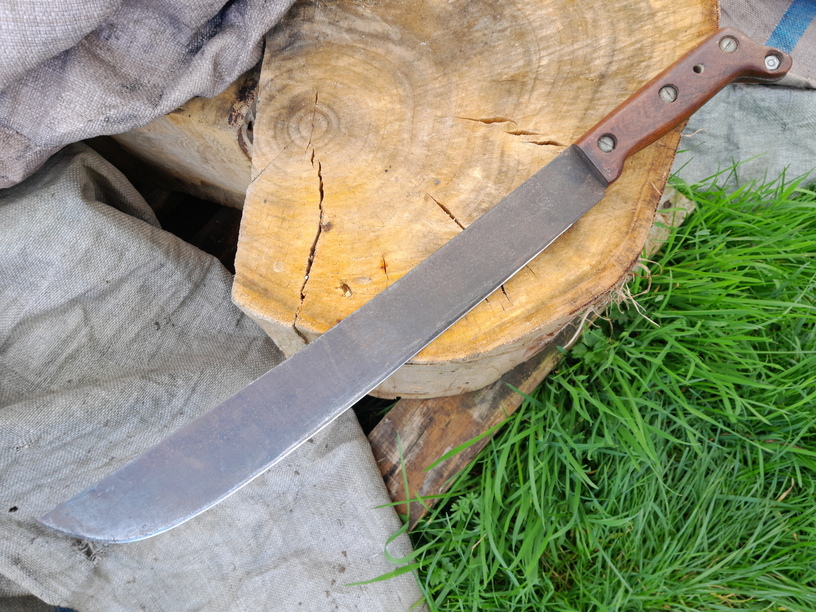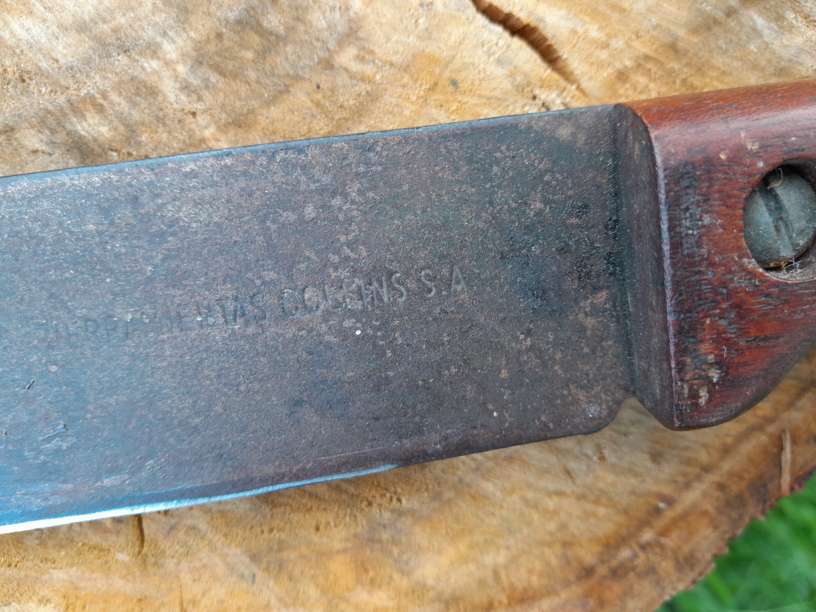

 17
17




 5
5




Invasive plants are Earth's way of insisting we notice her medicines. Stephen Herrod Buhner
Everyone learns what works by learning what doesn't work. Stephen Herrod Buhner
 11
11




To be is to do …Kant
To do is to be ..Nietzsche
Do be do be do…Sinatra
 14
14





 14
14




- Tim's Homestead Journal - Purchase a copy of Building a Better World in Your Backyard - Purchase 6 Decks of Permaculture Cards -
- Purchase 12x Decks of Permaculture Cards - Purchase a copy of the SKIP Book - Purchase 12x copies of Building a Better World in your Backyard
 19
19




A build too cool to miss:Mike's GreenhouseA great example:Joseph's Garden
All the soil info you'll ever need:
Redhawk's excellent soil-building series

















 2
2




John F Dean wrote:
I favor the Spetsnaz design.












 4
4




Tereza Okava wrote:
If I used it every day to cut sugar cane or something I would buy something nice, all metal, with weight to it. But as it stands right now, I don't have the hand strength and need a lightish one. Obviously it depends on what you're using it to cut-- I'm whacking not-really-woody brush, and light is good enough.
I used to use the machete to cut grass for the rabbits, but ended up trading it for a hand sickle instead, found it was much easier and safer.












 7
7




Timothy Norton wrote:
Big comfrey? Machete
Timothy Norton wrote:
I do believe there may be a badge bit for sharpening one...
 12
12
















 9
9




Trace Oswald wrote:Tramontina makes a good working machete for a pretty good price. Home Depot and the like carry them. Depending on size, they are $20-$30. The carbon steel blade comes with a pretty good edge on it from the store, but definitely work better if you spend ten minutes working on the edge. You can spend much more, but these machetes work well and are inexpensive enough that you don't have to be too worried if you accidently hit a rock or something. The wooden handle one is easier on your hand than the plastic one. I like the 22" one for the extra reach, but the 18" one is probably better for most people, and that one is the one you can get with the wooden handle. It is the one I would recommend you get, especially since you mentioned shoulder issues.
The "secret" to machete technique is like most chopping tools. Don't try to power-chop your way through things. Let the weight of the blade do the work. Machetes are tip-heavy, so getting decent speed and hitting with the tip make for the best cutting. If you get a decent swing and get speed at the tip of the blade, the weight of the blade will carry it through. It's much simpler to do than to explain it, but it will only take you about 5 minutes to get the hang of it. Just keep in mind, if you are working too hard or your arm is getting tired, you're doing it wrong. While not entirely effortless, using a machete isn't hard work. It should be kind of rhythmic, almost relaxing, unless you are chopping really heavy stuff. It's like most anything, a few minutes doing it are worth more than the time it took you to read this :) Hope that helps.
 13
13




Shawn Foster wrote:
Super helpful info; thank you, Trace!
You mentioned “if your arm is getting tired, you’re doing it wrong”, which makes sense. I mean, I’m assuming there will (especially initially) some muscle fatigue from repetitive motion, though I’m pretty aware of that potential and tend to break up heavy work sessions with rest. Which muscles tend to be the ones that are worked when one is doing it correctly? I would assume that this may change somewhat, based on angles and height and what it is you’re chopping, but I literally have no experience to draw on here. Trying to think ahead to forming reasonably decent technique so I don’t end up damaging myself (especially my shoulder) in the process.
A build too cool to miss:Mike's GreenhouseA great example:Joseph's Garden
All the soil info you'll ever need:
Redhawk's excellent soil-building series





 14
14




To be is to do …Kant
To do is to be ..Nietzsche
Do be do be do…Sinatra

 14
14




Tradition is not the worship of ashes, but the preservation of fire.
 16
16




 13
13




 10
10




Our inability to change everything should not stop us from changing what we can.
 18
18





In 1859, Scientific American reported that the Collins Company employed 350 people and produced 2000 tools daily – not monthly or yearly, but daily. By then, Collins had expanded and was also producing “adzes, picks, sledge-hammers, hoes, cane-knives, Spanish-machetes, and a whole host of other tools passing through the different processes from the rough-bars of iron and steel, until they were polished like glass, finished and packed ready for transporting to the sales office in New York” – so wrote Scientific American.
Collins tools – specifically, machetes – became highly-regarded and well-known throughout Central and South America. The Uruguayan writer Horacio Quiroga praised Collins machetes in his short stories. The author spent many years in the jungles of the Misiones region in modern-day Argentina. Not bad for a company from small-town Connecticut.
Even nowadays Sam Collins Day is a yearly celebration held in Canton, Connecticut, and the area where the factory and worker housing were located is known as Collinsville.
Unfortunately, the company suffered double-whammy blows in the 1950’s and 60’s. A severe flood in 1955 damaged part of the factory and the rail lines leading to it. The more serious problem was increased competition from mass-manufacturers of tools and the rise of the chainsaw that replaced axes in forestry and among builders. In 1966, after 140 years of operation, Collins Company closed its doors. Its South American operation was sold to Stanley Tool, and the domestic US operation, including the Collins name, was bought by Mann Edge Tool Co. of Lewiston, Pennsylvania. Finally, in 2004, Truper Herramientas bought the Collins brand and shifted manufacturing to Mexico. That’s the long and short of Collins axe history.
Don Eduardo, how did you start your work life?
I started working with Stanley tools from 1969 to 2010. It was 41 years of work.
I was 23 years old, I hadn't graduated. I worked and studied while I was with Stanley; They valued that very much. I started with the company Herriamentas Collins, a factory owned by Stanley, in Amatitlán, where the famous Collins machetes were made.
It was the only machete factory. They closed in 1979 due to union problems, so I went straight to working with Stanley. It was the terrible time of armed conflict. Initially, I stayed as a sales manager at Stanley; In 1982, I was appointed general manager.

 8
8




To be is to do …Kant
To do is to be ..Nietzsche
Do be do be do…Sinatra
 8
8











 5
5




 8
8




 11
11




 10
10




 10
10




 13
13




Together is our favorite place to be
 2
2




 10
10




Brent Bourdeau wrote:only advise, be mindful where your blade is at all times,and of where your follow through goes. It’s easy to get seriously injured if you don’t. !
 7
7




Douglas Alpenstock wrote:Wow, Chris. It's almost too pretty to use for sh** work. It looks like a hollow grind -- very unusual for a machete. What is the steel?
Together is our favorite place to be
 12
12




im here to learn as much as i can.
 11
11




 7
7




 3
3




Douglas Alpenstock wrote:
Brent Bourdeau wrote:only advise, be mindful where your blade is at all times,and of where your follow through goes. It’s easy to get seriously injured if you don’t. !
Bravo -- this is excellent advice, and it mirrors my experience. My blade (Ontario 1949 pattern) has tasted its owner.
Machetes are incredibly versatile but incredibly dangerous if you are slightly inattentive for a microsecond, tired, or distracted. And let's be honest, that's each of us one time or another. Many survival kits do not include a machete but a long handled hatchet instead -- they are less likely to cause injury during times of fatigue and stress.
Together is our favorite place to be
 2
2




 5
5




Rick Valley at Julie's Farm
 6
6




Do, there is no try --- Yoda
No one is interested in something you didn't do--- Gord Downie

 5
5




Working toward a permaculture-strong retirement near sunny Sperling.
 7
7




 7
7





|
Brace yourself while corporate america tries to sell us its things. Some day they will chill and use tiny ads.
Rocket Mass Heater Resources Wiki
https://permies.com/w/rmh-resources
|





